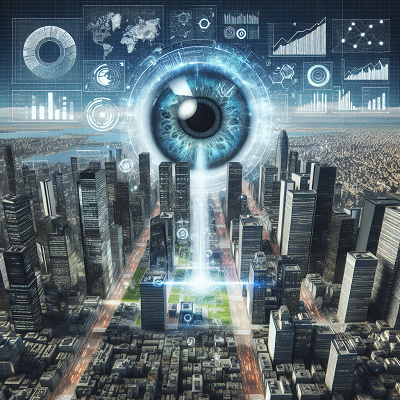In an era where data is the new gold, the ability to mine, refine, and utilize this precious resource effectively determines the success of organizations across various industries. Enter computer vision, a revolutionary technology that’s not just changing the game but rewriting the rules on how data is collected, analyzed, and interpreted. This blog delves into the transformative impact of computer vision on data, offering insights into its applications, challenges, and the future it promises.
The Basics of Computer Vision
At its core, computer vision is a field of artificial intelligence (AI) that enables computers and systems to derive meaningful information from digital images, videos, and other visual inputs — and act on that information. It’s about teaching machines to see and interpret the world not unlike how humans do, but with the added benefits of scalability, speed, and accuracy.
The journey of computer vision began in the 1960s, evolving from simple pattern recognition to the complex, deep learning models we see today. This evolution has been propelled by advances in machine learning, computational power, and data availability, transforming computer vision from a niche research topic to a ubiquitous technology that’s reshaping industries.
Revolutionizing Data Collection
Traditionally, data collection has been a labor-intensive process, fraught with human error and limitations. Computer vision automates this process, extracting high-quality data from images and videos with unparalleled efficiency and accuracy. This automation is not just about doing things faster; it’s about unlocking new possibilities.
Industries Transformed by Computer Vision
- Healthcare: From analyzing X-rays to monitoring patient movements, computer vision is enhancing diagnostic accuracy and patient care.
- Automotive: Self-driving cars rely on computer vision to navigate and understand their environment, making autonomous driving a reality.
- Agriculture: Farmers use computer vision to monitor crops and livestock, optimizing yields and improving farm management.
Enhancing Data Analysis with Computer Vision
Computer vision doesn’t just collect data; it offers new dimensions of analysis that were previously unimaginable. By processing complex visual data at scale, computer vision enables organizations to uncover patterns, trends, and insights that are invisible to the human eye.
Breakthrough Insights through Computer Vision
- Retail: Computer vision algorithms analyze customer behavior in stores, providing insights into shopping patterns and improving store layouts.
- Urban Planning: Cities use computer vision to analyze traffic patterns, enhancing road safety and urban mobility.
- Environmental Conservation: Researchers employ computer vision to monitor wildlife populations and habitat changes, informing conservation strategies.
Computer Vision in Your Organization
Integrating computer vision into your organization can unlock a treasure trove of data and insights. Here’s how to get started:
- Identify Opportunities: Assess where computer vision can add value, from marketing (analyzing customer engagement with products) to operations (optimizing manufacturing processes) and security (surveillance and threat detection).
- Integrate with Existing Systems: Computer vision should complement your current data analysis tools, requiring careful integration planning to ensure seamless operation and data flow.
Navigating the Challenges
While the potential of computer vision is immense, it’s not without its hurdles. Technical challenges, such as ensuring sufficient data quality and dealing with complex integration requirements, are just the tip of the iceberg. Ethical and privacy concerns, particularly around surveillance and data usage, pose significant challenges.
Overcoming the Hurdles
- Technical Mastery: Invest in skills and infrastructure that support high-quality data collection and processing.
- Ethical Guidelines: Develop clear policies on data usage, privacy, and consent, ensuring that your computer vision applications respect user rights and societal norms.
As we stand on the brink of a new era in data analysis, computer vision emerges as a key player in shaping the future. Its ability to transform raw visual inputs into actionable insights promises not just enhanced operational efficiency but a deeper understanding of the world around us. By embracing computer vision, organizations can not only navigate the complexities of today’s data landscape but also chart a course towards a more informed and insightful future.
The journey of integrating computer vision into your data strategies might seem daunting, but the potential rewards are undeniable. As we harness this technology’s power, we’re not just seeing the future; we’re actively building it. Let’s embark on this transformative journey together, exploring the endless possibilities that computer vision holds for our data-driven world.



